Code over Configuration 〜 Compute@Edge は VCL に置き換わるのか
2022-03-29 Fastly User Meetup #4
Yusuke Wada
トラベルブック
- 「旅行商品比較サイト」
- 「旅行・ライフスタイルメディア」
テックブログやってます。
TravelBook Tech Blog
https://tech.travelbook.co.jp/
アジェンダ
「Compute@EdgeはVCLに置き換わるのか?」
- 機能
- 開発
- 性能
今回、Compute@EdgeはJavaScriptによる実装を前提としています
全て個人の見解です!(間違っているところあると思います)
イントロ
CDNのエッジで実行する系いろいろ
- Cloudflare Workers
- Fastly Compute@Edge
- AWS CloudFront Functions
- AWS Lambda@Edge
- Deno Deploy
- Vercel Edge Functions
- Netlify Functions
CDNのエッジで実行する系が面白い - ゆーすけべー日記 https://yusukebe.com/posts/2021/functions-at-edge/
中でもCloudflare WorkersとCompute@Edgeの比較
JavaScriptにおいては、どちらもService Worker互換
使ってみて
Cloudflare Workers
- アプリケーション寄り
- KV、Durable Objectsなど
- 例: Remixが動く
Supporting Remix with full stack Cloudflare Pages https://blog.cloudflare.com/remix-on-cloudflare-pages/
Fastly Compute@Edge
- FastlyはCDNが強い
- Compute@Edgeはバックエンドがないと警告が出る
- *そのうち変わるかもしれない

DOOMのようなアプリケーション寄りのデモもあるが…

DOOM | Fastly Developer Hub https://developer.fastly.com/solutions/demos/doom/
Fastly Compute@Edgeは「CDNに強い」
余談
Fastly vs Cloudflare
- Cloudflare: ネットワークパフォーマンスの最新情報:Full Stack Week https://blog.cloudflare.com/ja-jp/network-performance-update-full-stack-week-ja-jp/
- Fastly: 嘘、大嘘、そして (Cloudflareの) 統計 : Cloudflareのパフォーマンステストの欠陥を証明 | Fastly https://www.fastly.com/jp/blog/debunking-cloudflares-recent-performance-tests
CDNに強い?
=> バックエンドを活かす
ただし、FastlyにはVCLがある
Varnish Configuration Language
あくまでVarnish(キャッシュサーバ)の設定言語
VCLでできることはCompute@Edgeでできるのではないか?
Code over Configuration
「Edge Functions – Vercel」のページより
https://vercel.com/features/edge-functions
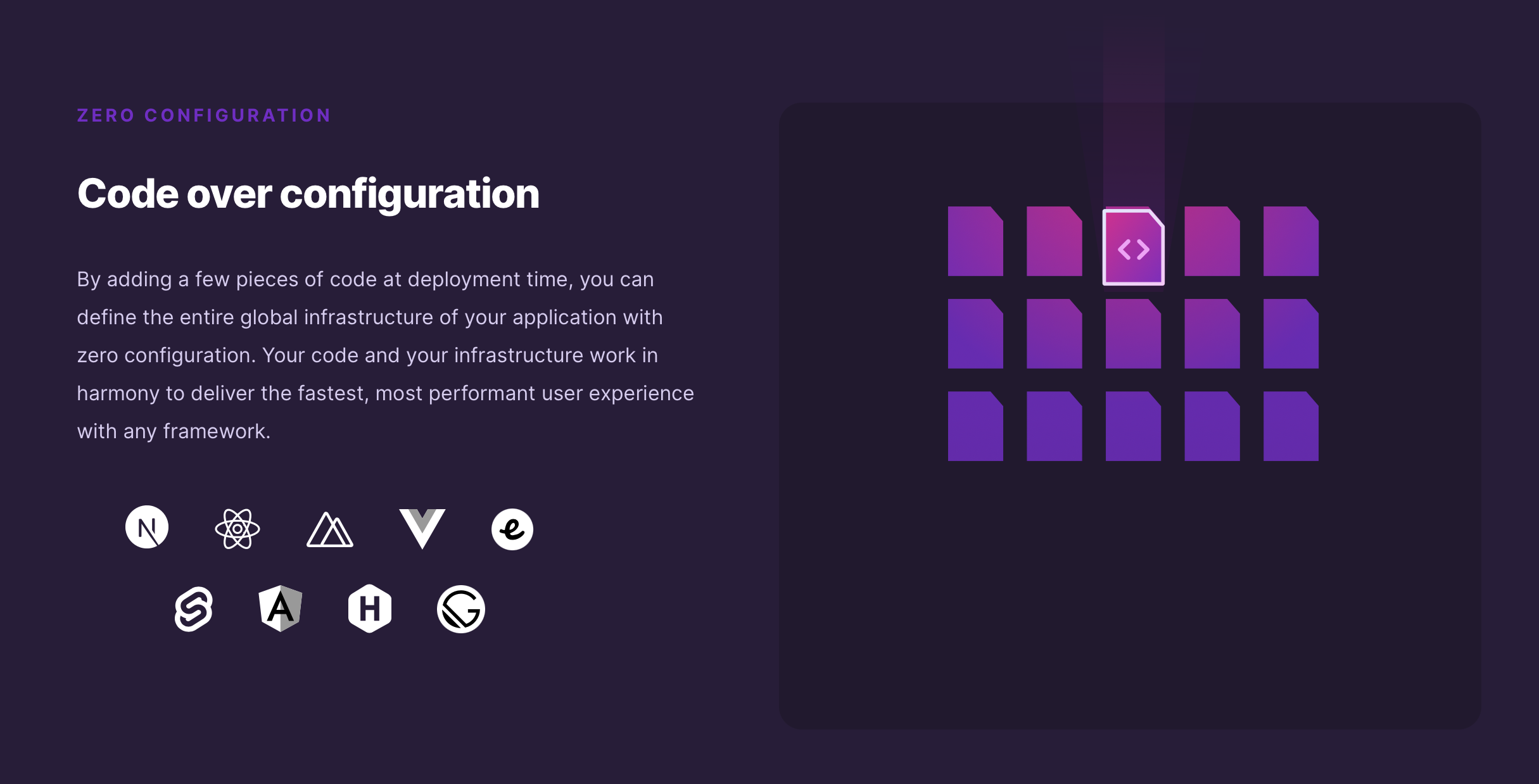
Compute@EdgeはVCLに置き換わるのか
- 機能
- 開発
- 性能
1. 機能
「Migrate from VCL」というドキュメントがある
Migrate from VCL | Fastly Developer Hub https://developer.fastly.com/learning/compute/migrate/
「How we migrated developer.fastly.com from VCL to Compute@Edge」という記事もある
2022/03/16
How we migrated developer.fastly.com from VCL to Compute@Edge | Fastly
https://www.fastly.com/blog/how-we-migrated-developer-fastly-com-from-vcl-to-compute-edge
Compute@Edgeでできること
Configuration
- Edge dictionaryから設定データを取得する
Request
- リクエストヘッダを追加する
- クエリストリングのソートとサニタイズ
- リクエストからクエリストリングを抜き出す
- リクエストから特定のヘッダを削除する
- リクエストパスを変更する
- 特定のヘッダが存在するか確認する
- ヘッダの値に指定した文字列が存在するか確認する
- リクエストボディを取得する
- クライアントのGeo情報を取得する
Backends
- リクエストのパスごとにバックエンドを切り替える
- エラーが起きたらもう一つのバックエンドを使う
Response
- スクラッチでレスポンスを作成する
- 画像を返す
- レスポンスヘッダを設定する
Controlling the cache
- 明示的にTTLを設定する
- 強制的にpassする
- SWRを指定する
トラベルブックがVCLでやってることもほぼ全てカバー
トラベルブックがやってること1
- Edge Dictionary
- UAによるステータスコードの変更
- Basic認証
- 検証かどうか環境の判定
- リクエストメソッドによる分岐
- クッキーのありなしの判定
- デバイス判定
- パスによるバックエンドの変更
トラベルブックがやってること2
- キャッシュキーの作成(URL、デバイス、ホスト)
- ステータスコードでキャッシュの有無
- パスによってTTLを変更
- SWR、Stale-IF-Errorの設定
- レスポンスヘッダの設定(x-ttl)
- Varyヘッダの変更
- サロゲートキーの生成
- エラーの場合、S3のエラーページを表示
- 401のsyntheticレスポンスの変更
- noindexヘッダ
- ユニークIDの生成(sha256)
工夫が必要なもの
HTTP/3 - alt svcヘッダの追加 h3.alt_svc()
自分でヘッダに足す
Brotoli、Gzipの設定 set beresp.gzip = true
X-Compress-Hint | Fastly Developer Hub https://developer.fastly.com/reference/http/http-headers/X-Compress-Hint/
(たぶん)できないこと
- ACL
client.ip ~ ${ip_block_acl_name} Fastly-Debug:1ヘッダが効かない => 自分でやれ?- 実験的な機能、
h2.early_hints
注意したほうがいいこと
- 環境変数が使えない => Edge Dictionaryで変数を管理する
Fastly Compute@Edgeについて分かったこと – TravelBook Tech Blog
https://tech.travelbook.co.jp/posts/fastly-compute-at-edge/
ほぼ全ての機能をCompute@Edgeがカバー
逆にCompute@Edgeだからできる機能
例
- ダイナミックに
Linkヘッダをつける - Signed Exchange
- FUJIMIさんの例 => Preview URLの発行
sxg-rs/fastly_compute at main · google/sxg-rs https://github.com/google/sxg-rs/tree/main/fastly_compute
要望
- パスごとにVCL、Computeと分けたい <= 今だとプロジェクト単位
2. 開発
(あらためて)JavaScriptで書ける!!
VCL
set obj.status = 200;
synthetic "Hello world";
return(deliver);
Compute@Edge
const handleRequest = async (request) => {
return new Response("Compute@Edge!")
}
addEventListener("fetch", event => {
event.respondWith(handleRequest(event.request))
})
Codeである意味
- 標準であること
- 再利用性
- 仮想環境
- テスト
Codeである意味
1. 標準であること
Service Worker (like) API
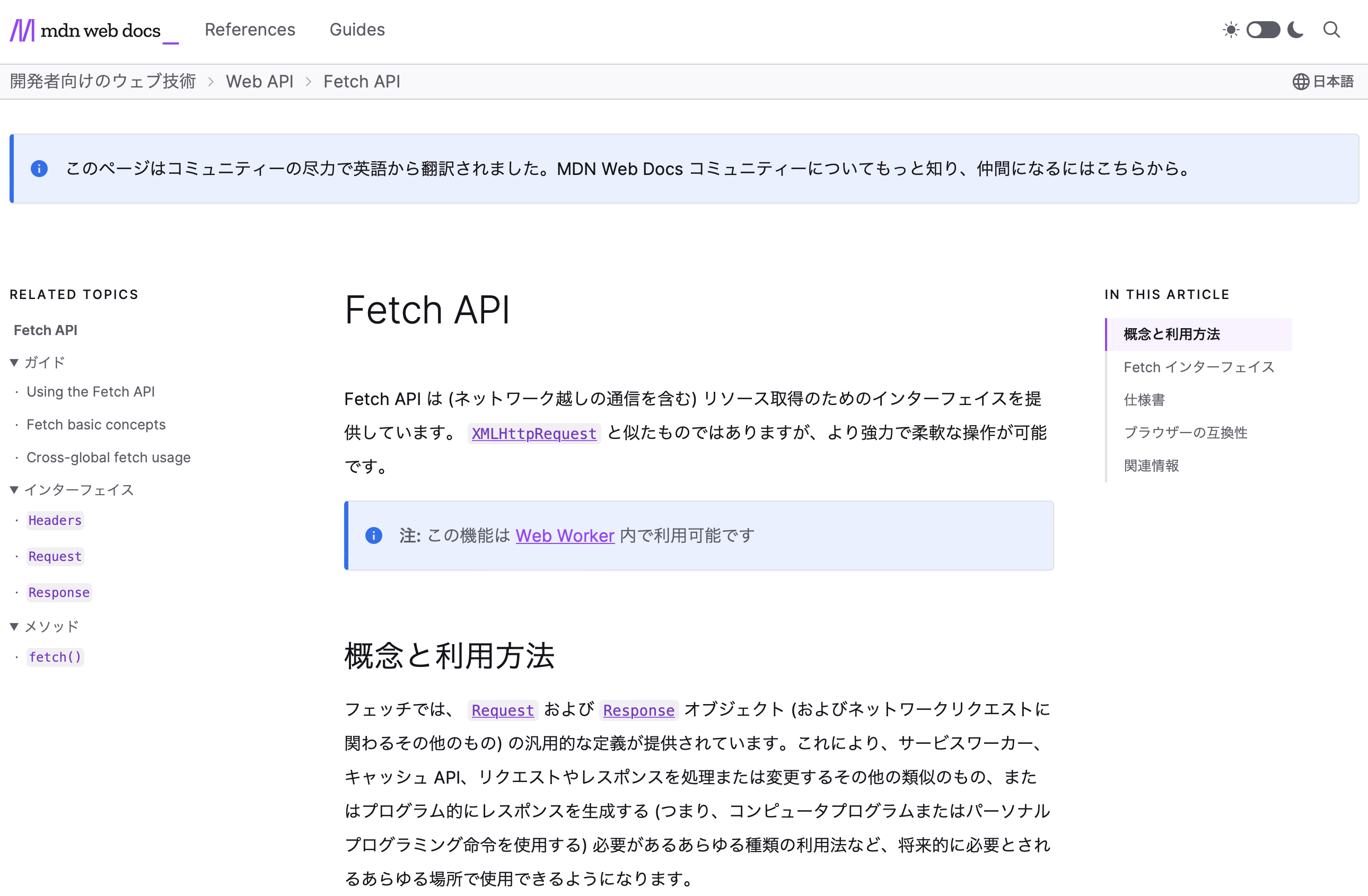
Fetch API - Web API | MDN https://developer.mozilla.org/ja/docs/Web/API/Fetch_API
標準のAPIが使える
const path = new URL(req.url).pathname // Request, URL
const ua = req.headers.get('User-Agent') // Headers
res.headers.append('X-Debug', `${path} - ${ua}`) // Response
@fastly/js-compute
- Dictionary
- Env
- Headers
- Request
- Response
- TextDecoder
- TextEncoder
- URL
- URLSearchParams
@fastly/js-compute - v0.2.4 | @fastly/js-compute - v0.2.4 https://js-compute-reference-docs.edgecompute.app/
TypeScriptでも書ける
TS => JS => Wasm
型がある


Codeである意味
2. 再利用性
- ありものを使える
- 作ったものをあとから使える
ルーター・フレームワーク
- itty-router
- Sunder
- worktop
- Hono
Service Worker互換なので「Cloudflare Workers向け」を謳っているものも使える
Hono[炎]
Hono[炎] - Ultrafast web framework for Cloudflare Workers ( and Fastly Compute@Edge ).
yusukebe/hono: Hono[炎] - Ultrafast web framework for Cloudflare Workers.
https://github.com/yusukebe/hono
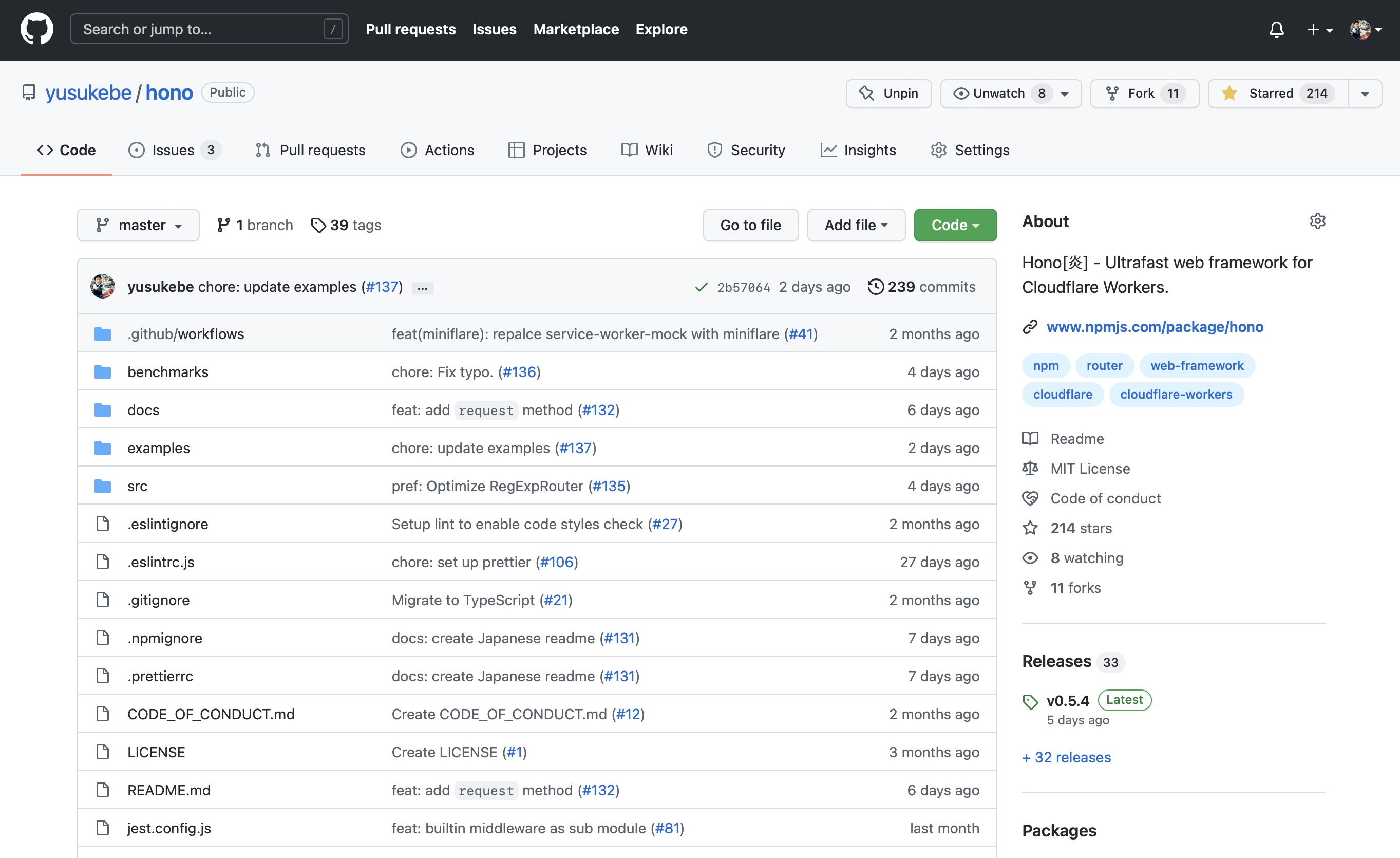
- ルーティング
- Request/Responseへのショートカット
- Middleware
Basic
import { Hono } from 'hono'
export const app = new Hono()
app.get('/', (c) => c.text('Compute@Edge!!!'))
Custom Middleware
app.use('*', async (c, next) => {
const ua = c.req.header('User-Agent') || ''
await next()
if (ua.match(/MalBot/)) {
c.res = c.text('Forbidden', 403)
}
})
Built-in Middleware
app.use(
'/auth/*',
basicAuth({
username: 'compute',
password: 'edge',
hashFunction: (m: string) => SHA256(m).toString(),
})
)
app.get('/auth/*', (c) => c.text('You are authorized!'))
- basic-auth
- body-parse
- cookie
- cors
- etag
- graphql-server
- logger
- mustache
- powered-by
- serve-static*
With Backend
app.get('/backend', (c) => {
const backendResponse = fetch(c.req as Request, {
backend: 'origin_a',
})
return backendResponse
})
さらに、同じコードがCloudflare Workersで動くこともある
Codeである意味
3. 仮想環境
Fastly CLI / Viceroy
開発からデプロイまで
$ fastly compute serve
$ fastly compute deploy
VCLにはない
- 手元で動かせる
- デプロイが早い・速い
- Terraform => Fastly CLI
- *ただしバックエンドのキャッシュをエミュレートしない
Codeである意味
4. テスト
ユニットテストができる
Jestによるテスト
test('GET /', async () => {
const res = await app.request('/')
expect(res.status).toBe(200)
})
test('Access control for a Bot', async () => {
const req = new Request('/')
req.headers.set('User-Agent', 'MalBot/0.01')
const res = await app.request(req)
expect(res.status).toBe(403)
})
CIでテスト、デプロイもできる
例: GitHub Actionsからデプロイする
fastly/compute-actions: GitHub Actions for building on Compute@Edge.
https://github.com/fastly/compute-actions
(日経新聞さんはVCLをCI/CDしている!)
ただし
バックエンドのユニットテストができない
Viceroyレベルでテストしなくてはいけない = E2Eっぽいテストになる
開発サーバーを立ち上げてfetchする
const url = new URL('http://127.0.0.1:7676/')
test('GET "/"', async () => {
url.pathname = '/'
const res = await fetch(url.toString())
expect(res.status).toBe(200)
})
test('GET "/banana"', async () => {
url.pathname = '/banana'
const res = await fetch(url.toString())
expect(res.status).toBe(404)
})
Cloudflare Wokersの場合
Jest Environment · Miniflare https://miniflare.dev/testing/jest
// jest.config.js
export default {
testEnvironment: "miniflare",
testEnvironmentOptions: {
bindings: { KEY: "value" },
kvNamespaces: ["TEST_NAMESPACE"],
}
}
Codeだからこそ
- 「標準」を使える => Service Worker/TS
- 再利用性が高い => フレームワーク
- 仮想環境がある => Viceroy
- テストができる => Jest/CI
3. 性能
パフォーマンス計測
- VCL vs Compute@Edge
- Compute@Edgeの実装別
1. VCL vs Compute@Edge
- VCL
- Compute@Edge JavaScript
- Compute@Edge Rust
Compute@Edge AssemblyScript
Synthetic Response
計測方法
VCLはローカルで動かせないので、オンラインのホストを叩く
https://vcl.freetls.fastly.net/https://is-js-fast.edgecompute.app/https://is-rust-fast.edgecompute.app/
ネットワーク以外でも差が出てしまう
(この場合はVCLのホストが遅い)
- DNS
- SSL
TTFBで計測する
なるべく純粋な「反応速度」
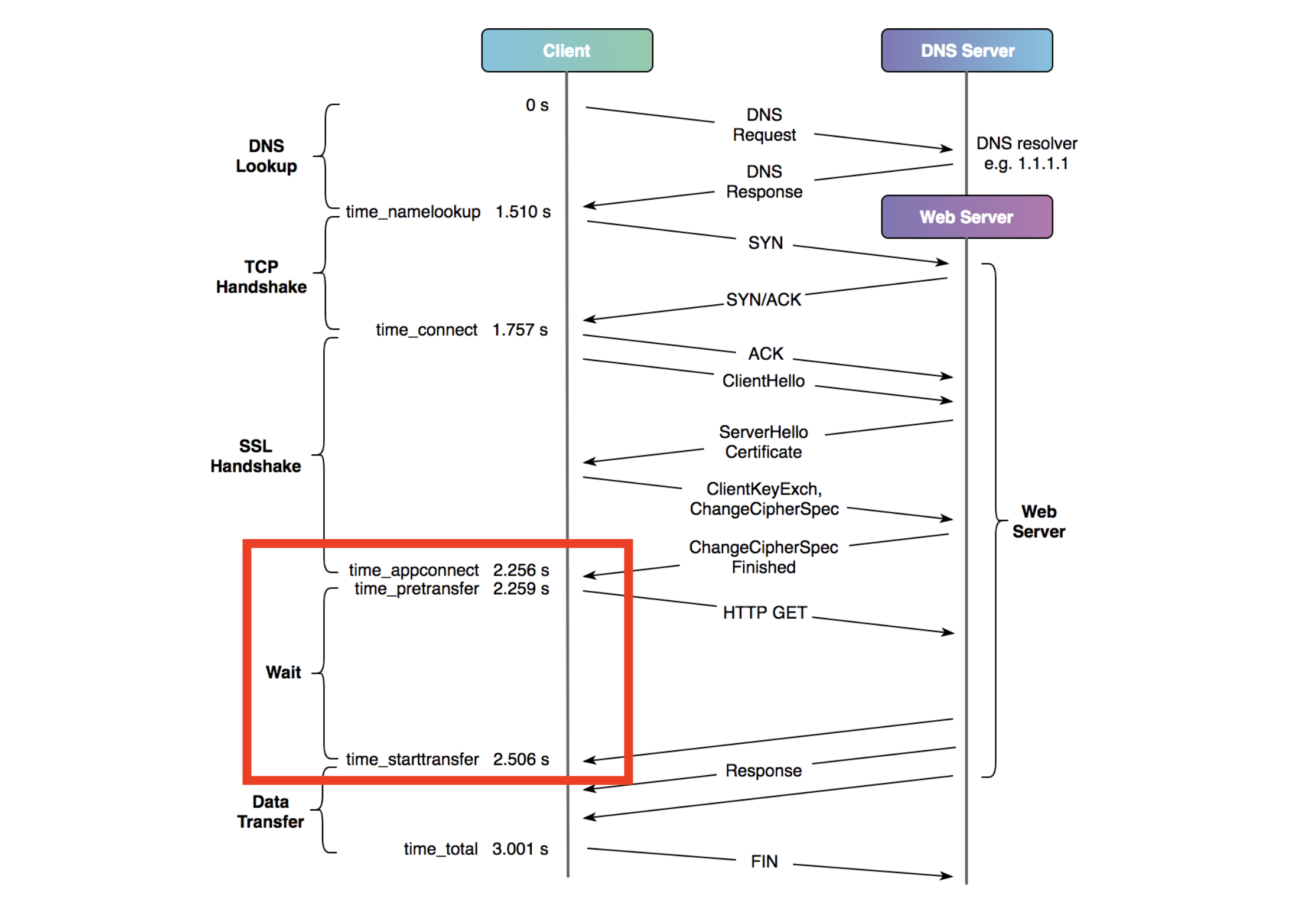
Timing web requests with cURL and Chrome https://blog.cloudflare.com/a-question-of-timing/
同じネットワーク環境でかつ
curlの「time_starttransfer - time_appconnect」で比べる
では計測
VCL - 7ms
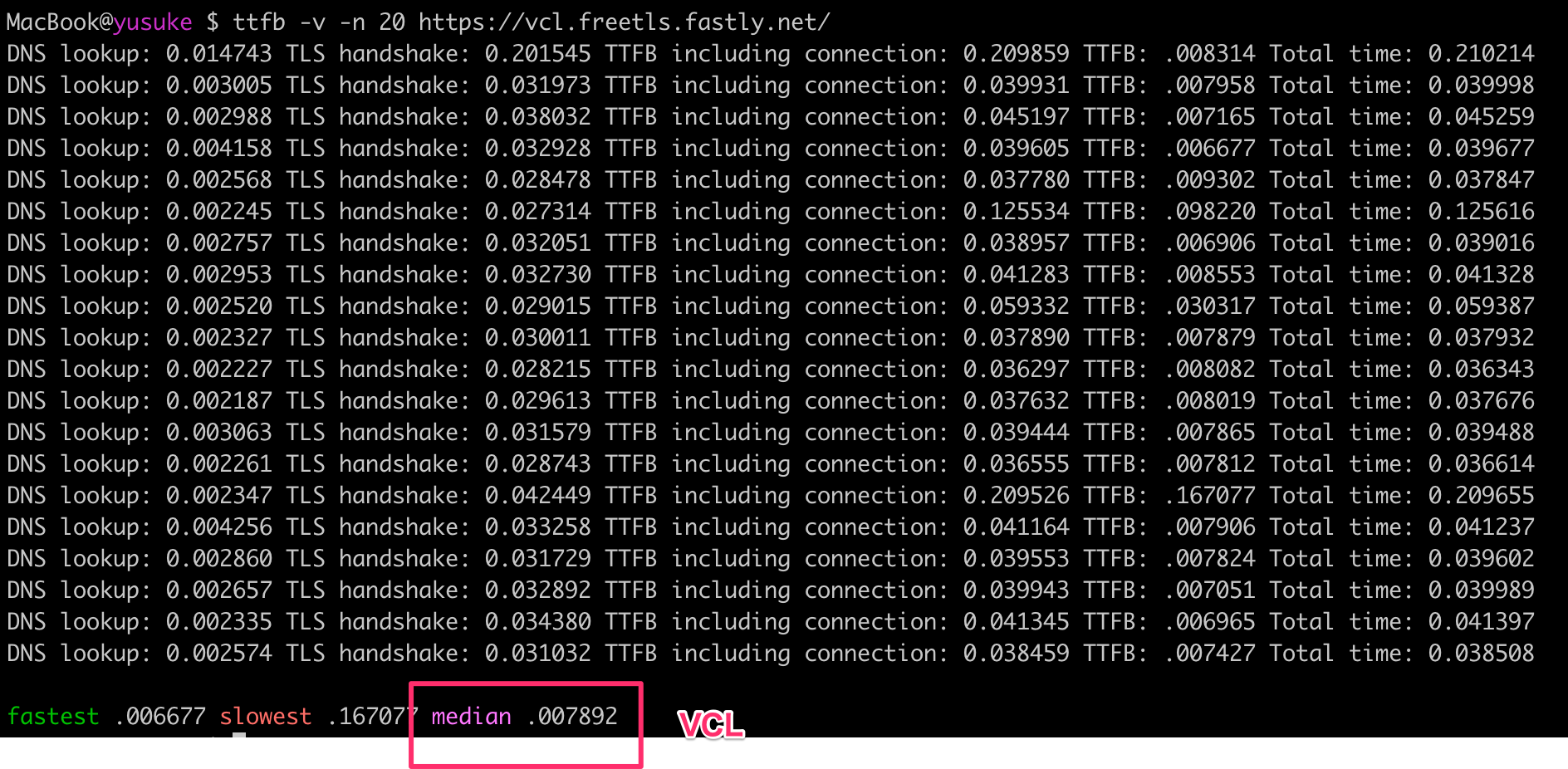
Compute JS - 18ms
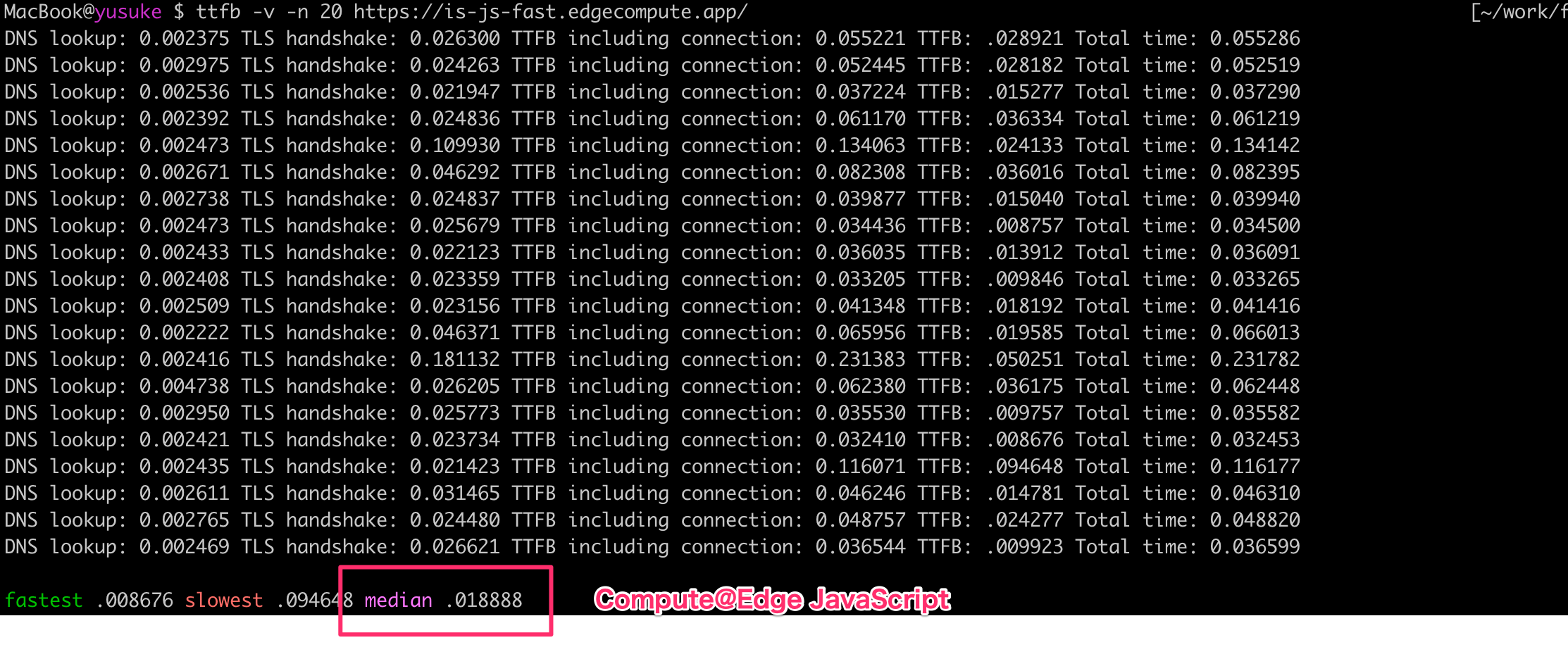
Compute Rust - 12ms
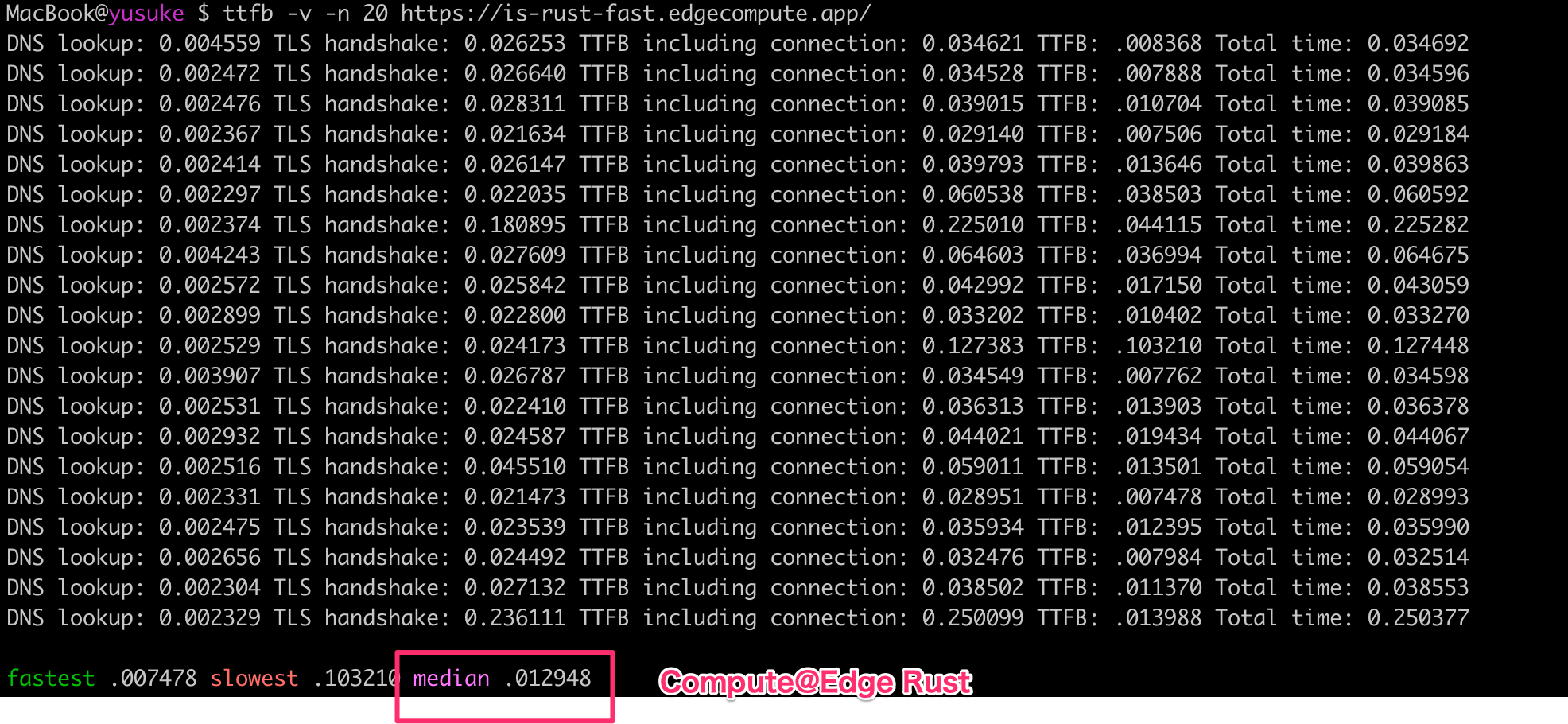
順位
- VCL - 7ms
- Compute Rust - 12ms
- Compute JS - 18ms
何回計測しても順位は変わらず
結構差がついた
2. Compute@Edgeの実装別
- Hono
- itty-router
kwhitley/itty-router: A little router.
https://github.com/kwhitley/itty-router
論理的にはHonoの方が格段に速い
オンラインだと差が出にくいので、ローカルサーバーを叩く
Hono => 2054 Reqs/sec, 1.95ms

itty-router => 1779 Reqs/sec, 2.25ms

Compute@Edge同士ならややルーターで差が出る
性能まとめ
- VCL速い(Wasm/Lucetとの差?)
- ComputeでもJSよりRustの方が速い(Wasmにした時の違い?)
- JS同士ならルーターの性能差がでる
=> Compute@Edgeが速くなって、Wasmにした時でもRustと同等になって、速いルーターを使えばよい
以上、Compute@Edgeについて
- 機能
- 開発
- 性能
「Compute@EdgeはVCLに置き換わるのか?」
評価
- 機能 => ○
- 開発 => ◎
- 性能 => △
いわくら「(VCLだとプロパティ・関数の名称を)いちいち調べてる」
わだ「Compute@EdgeだとVSCodeで補完が効く」
いわくら「!!!!」
まとめ
(パフォーマンスがVCLに近づけば)
「Compute@EdgeはVCLに置き換わる」
そして【VCL以上】の体験を手に入れる
正式リリースに期待!
- Rust - Limited Availability
- JavaScript - BETA
おしまい
トラベルブックではエンジニア募集中!
Fastlyガンガン使ってます
Compute@Edgeも導入するかもしれません!
TravelBook Tech Blog